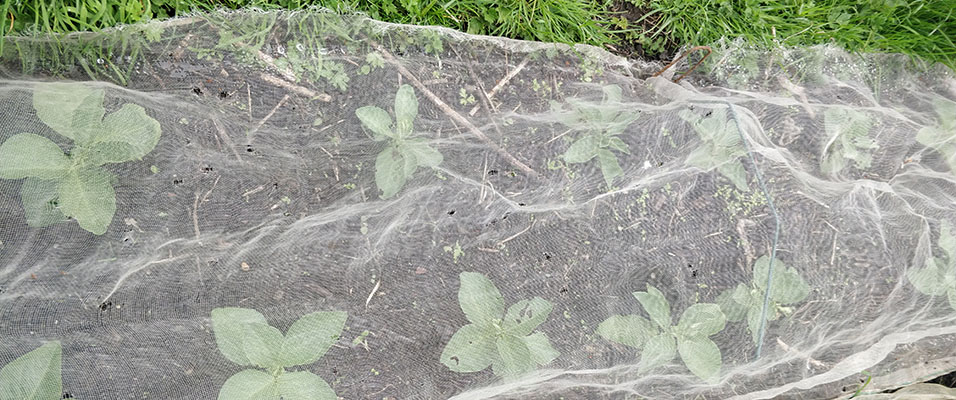Plotlines, written by one of our York allotmenteers, is a new twice monthly blog aimed at anyone who would like some guidance about growing on an allotment.
Spring is here, despite how chilly it still is this year, and a busy time of year for plot holders. Given the chill, you might want carefully to wrap the blossom on your fruit trees in horticultural fleece – or old net curtains work well too. If the flowers get frosted, there’ll be no fruit. And no happy pollinators either. Similarly, if you’ve got broad beans or peas, or sweet peas for their gorgeous summer flowers, that you sowed indoors (on a window sill at home, or a greenhouse if you’re lucky), it’s worth covering them when you plant them outside about 9 inches apart. If it’s just a few plants, plastic pop or water bottles from someone’s recycling bin can be cut in half to make a little shelter for each individual plant.
Are you digging or no-digging? Either way, care for the soil is the most important allotment job; your soil for seed sowing should be warm and moist and have a fine tilth – so no dense clods of heavy soil that those delicate first shoots will struggle against. Give your seedlings a gentle start in life. If you thought ahead, you might have your first sowing area warming under some salvaged plastic sheeting. March is the driest month of the year usually, so that may help to keep the ground nice and moist too, ready for your spring sowings.
What to sow in that lovely soil then? Broad beans and peas can be sown direct outdoors now. Beetroot likes an early start too – choose a variety that’s slow to bolt (make flowers), like Boltardy. Once you’ve raked your soil really fine, you can sow carrots as well – but cover the row with something like enviromesh to keep out the carrot root fly which will make holes in your lovely crop. It’s also time to start your salad bed, a first sowing of just a few seeds of your chosen varieties of lettuces, to heart-up or cut-and-come-again, some wild rocket (which won’t be perforated by leaf beetle), some parsley and radishes. Be gentle with your watering: the seeds are small and can be washed away by a deluge.
If you’re growing potatoes you’ve probably already chosen your favourite varieties, with a range of harvesting times, and they’re chitting (sprouting) in readiness for the big day when they go in the earth. Traditionally allotmenteers plant early potatoes on Good Friday; some say this is because that day, which is also Passover, is the first full moon after the vernal equinox – an auspicious time for root planting. Some say it’s because it’s a bank holiday, and so we had an extra day to spend on the plot. Either way, it’s a good time to get them in the ground. You could dig trenches and put some of the precious contents of the compost bin in the bottoms, or just make individual holes for each seed potato if you’re not digging. An allotment neighbour did a little experiment of both methods a few years ago and there was no difference in the yield – a lot of difference in the effort involved though. If you have grass cuttings, or leaf mould, or even chopped up nettles without their roots, you could mulch on top of the soil with that to keep the moisture in.
It’s an optimistic time of year – keep the soil warm and moist and our optimism might be realised…..


